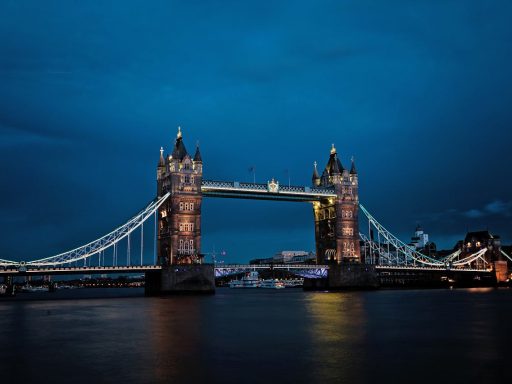The tourist industry was among the hardest hit by the coronavirus pandemic. With the entire world virtually shut down for the better part of a year, people simply didn’t travel. But now that restrictions are easing and people are more comfortable about leaving home, travel is starting to pick up. And with the increased travel, we are starting to see some new trends.
What will travel be like in a post-pandemic world? No one knows for sure. However, if currently emerging trends are any indication, what we previously knew as travel may never fully return. That doesn’t mean the tourist industry will continue to suffer financially, but it does suggest that travel will take on an entirely new identity.
1. More Domestic Travel
For the time being, expect most travel to be domestic. Many countries are still wary of allowing foreigners in. For example, the UK maintains a list of countries from which you cannot travel within 10 days of visiting. They call it the Red List. There are dozens of countries on that list.
Furthermore, most countries are still enforcing quarantine rules for visitors. Quarantining for 10 days doesn’t make sense if you’re travelling for a 14-day holiday. Thus, people are better off limiting themselves to domestic destinations.
On a positive note, there are plenty of travellers who have seen the world but not their own countries. The emerging trend of focusing on domestic destinations could actually be a good thing. More people will see their own countries and support the domestic tourism industry.
2. Greater Interest in RVing
With the focus on domestic travel and flying being more of a hassle these days, we are seeing a greater interest in RV travel. In fact, RV sales are up in many countries. People are choosing to hit the road rather than deal with the discomforts of air and train travel. In an RV, you can travel to your destination without having to cover your face. You can eat and sleep in your own rig without having to mingle with other guests as you would at a hotel.
It will be interesting to see if some hotel properties forced to close due to the pandemic choose to tear down their buildings and convert to campgrounds. We probably won’t see anything on a large scale, but there could be a hotel owner here or there willing to reimagine its property.
Read next: An Essential Guide to Traveling Off-Grid
3. Vaccination Passports
There has been talk of implementing vaccination passports in a number of countries. The UK appears ready to become among the first to implement and enforce a vaccination passports system. However, most of the rest of Europe may not be on board.
EU officials have said vaccine passports are discriminatory and a non-starter. Instead, they have come up with what they call the Digital Green Certificate. Three ways are there:
- Getting vaccinated
- Getting and recovering from COVID-19
- Showing a negative COVID-19 test prior to departure.
Some would argue that the Digital Green Certificate is no different than a vaccine passport. People are still required to prove they pose a very low risk of infecting others before being allowed to travel.
In the end, different countries are going to develop different policies for vaccine passports and alternative methods of proving coronavirus safety. Do not expect such measures to go away any time soon. They might even become a permanent part of international travel.
4. Masks and Social Distancing
Masks and other face coverings are not necessarily an emerging trend. However, expect many tourist destinations to require face coverings indoors and when socializing amongst non-family members. This is something else that could actually become a permanent part of travel.
As for social distancing, there is an emerging trend of forcing social distancing by redesigning tourist properties to keep people apart. For example, resort dining rooms are being redesigned with fewer tables spread out across a larger footprint. By reducing the number of people dining in a given space, social distancing occurs naturally.
It will be interesting to see how this trend plays out in the cruising industry. Cruise ships are, by their nature, densely packed vessels. It is difficult to see how the industry can adapt to permanent social distancing without substantially increasing its fares. Simple accounting explains why.
Cruise ships have to generate a specific amount of revenue to continue sailing. If they are bringing fewer passengers on board, generating the same amount of revenue requires charging them more.
5. Constant Reminders from Operators
Of all the emerging trends, the one that appears most disturbing is that of constant reminders from operators. This trend is disturbing in the sense that people want to forget about all that’s wrong with the world when they travel.
Constant reminders of coronavirus will be like so many hazard warning signs popping up everywhere. Reminders to wear masks and wash hands will be plastered on restaurant windows and restroom stalls. Hotels, bars, and nightclubs will routinely broadcast messages over their PA systems, reminding people to practice distancing.
We will also be reminded by tourism employees themselves. Plan to see covered faces at least through the end of this year, if not longer. It may be quite some time before we see the uncovered smiles of those hospitality workers who make travel so delightful.
Read next: First Time Traveller’s Guide to Pack Luggage
6. Discounted Rates on Almost Everything
Not all of the emerging travel trends are negative. One positive is found in discounted rates on almost everything. Indeed, the travel industry is so desperate to get people moving again that they are offering substantial savings on everything from flights to hotel rooms.
There are some exceptions to this rule. The cruise industry was mentioned previously, given that higher fares are necessary to cover the cost of operating a ship. Yet some of the most sought-after destinations in the world are also not cutting their prices. Travellers will have to look at each preferred destination on a case-by-case basis.
Be that as it may, the next several months may see some of the lowest prices in history. Assuming the world fully reopens by the end of the year, 2022 could be just the opposite. Prices might explode next year in response to high demand.
Emerging trends suggest that travel in a post-pandemic world will be different. That does not necessarily mean bad. It just means travellers will find new and different ways to enjoy travelling.






